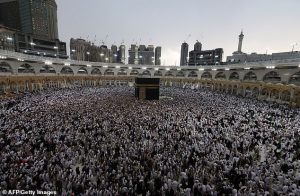Traditionally people are supposed to eat dumplings for every meal, every day, but most people don’t do that. Some eat dumplings during the New Year’s Eve dinner, while others eat them for the first breakfast. Though dumplings aren’t popular everywhere in China, contrary to popular belief. In the South many people would rather eat spring rolls and balls of glutinous rice in soup called tangyuan. Dumplings are more popular in the north. Here are images and descriptions of these Chinese New Year dishes and more.
For desert, many Chinese New Year’s desserts have symbolic meaning in the name. An example is the desert tangyuan, meaning “soup balls” but sounding like tuanyuan, which means reunion. Another example is Nian gao, which is a type of rice cake that symbolizes success. Fa gao, is a third dessert that is a sponge cake muffin hybrid. It’s often dyed festival colors! The fa in the name fa gao, is the same as in fa cai, which means “to get right”. Here are some pictures and more information! All three of these deserts have a special meaning and connection to the holiday season.
There are also special wines for the Spring Festival. Many Chinese people love drinking, and have wine for every ceremony, festival, or important dinner. With China having such a rich wine culture, it’s no surprise that there’s a bunch of drinking games played during the Spring Festival. But there are also strict toasting etiquette rules to know and follow when dining with someone older like at New Year’s dinner. There are lots of details to know about the order of the toasts, seating, how to hold the wine glass, and others.
Decorations for Chinese New Year are all red! Families will cover their homes in the color red. In the story about Nian, the color red also scared the monster away as well as the firecrackers. Red is an invaluable weapon and used in almost all Chinese New Year decorations. The Chinese will hang up red lanterns, strings up chili peppers, and paste red paper on their doors and windows. People often buy new red clothes to add to their Spring Festival wardrobe to bring good luck and start over fresh.
Chinese New Year ends on the first full moon of the lunar year. This night is the Yuanxiao Festival or Lantern Festival. Family is still important, but this night of the holiday is for partying and freedom. In ancient times girls were not allowed to walk around outside by themselves, except on this night. Girls would walk around to moon-gaze and look at the beautiful lanterns and because of this, it’s also known as Valentine’s Day in China.
Xin nian kuai le, is the Chinese New Year greeting, meaning literally Happy New Year! But in Hong Kong and other Cantonese-speaking regions it’s more common to say, gong hei fat choy, or in Mandarin Chinese it’s, gong xi fa cai, which means congratulations on the fortune.
Resource: https://chinesenewyear.net/21-things-you-didnt-know-about-chinese-new-year/

